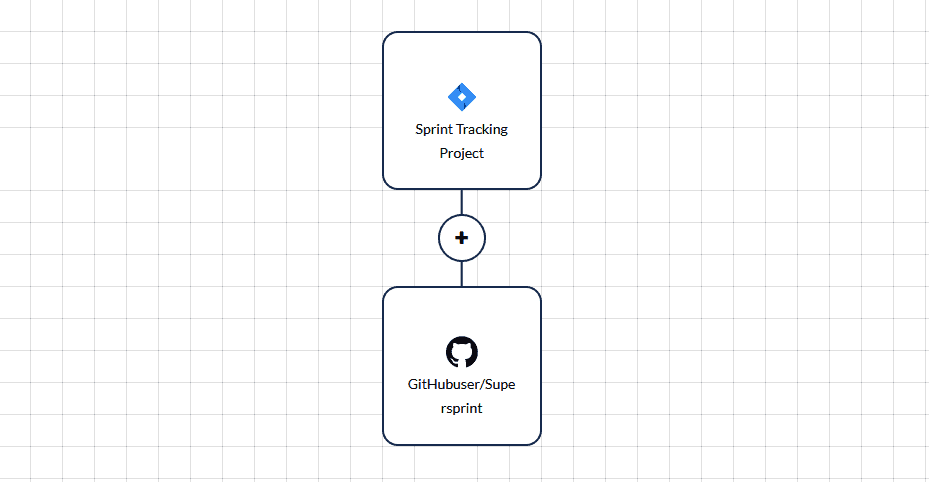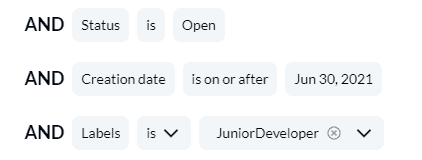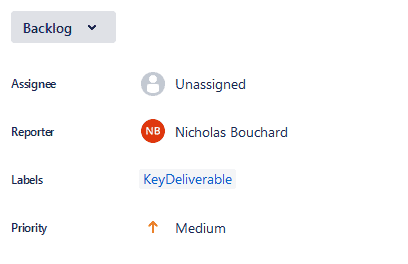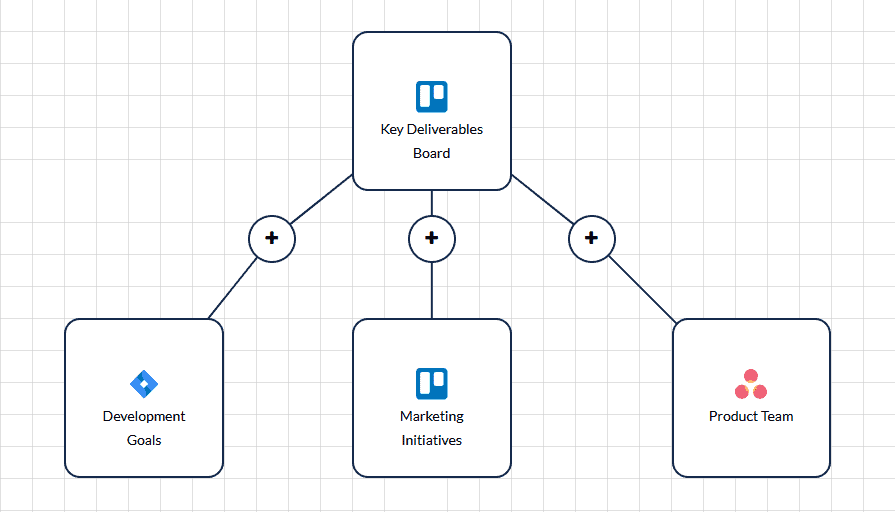What Is a Sprint Execution Workflow?
You’ve gone through the backlog, prioritized what needs to happen, and planned your next sprint. There have been meetings and messages, and everyone knows what they’re supposed to do. Now you just need a way to stay updated on how their work is going. You trust your developers to get things done, but you want the ability to identify and address blockers as they happen. You’re here to help your team, and you want to know exactly where and when to give that support.
That’s what the sprint execution workflow is about.
What is a sprint?
Sprints are an essential part of Scrum, an Agile methodology typically used by software development teams to continually deliver features, bug fixes, and more for software projects. It’s a short period of time in which developers pack important work. Most teams use a two-week sprint, though anything shorter than a month works.
Once a sprint is completed, they’ll usually review what’s been done and what still needs doing, and plan the next sprint. Here are some of the essential elements of a successful sprint execution process:
- The sprint planning meeting: During this meeting, the development team will review the product backlog to set their priorities for the next sprint. Tasks will be fleshed out and assigned, and may even be quantified using methods like story points to ensure all that work can actually be completed in a single sprint.
- The sprint itself: After the sprint is kicked off, development teams focus on the work that was assigned during the sprint planning meeting.
- Daily stand ups: Once a day, the development team will meet for a brief meeting to cover what they’re working on, where they need support, and what they’ll be working on in the near future. It’s also an opportunity to review overall sprint progress.
- Sprint retrospectives: A retrospective allows the development team, project managers, and team leads to look back over a previous sprint to see what went well and what didn’t, all to make the next sprint run more smoothly.
Defining a sprint execution workflow
If the product backlog workflow is about centralizing and prioritizing development requests, the sprint execution workflow covers everything that comes after. Most agile methodologies use a series of sprints — short bursts of intense development work — to achieve particular goals. Sprints can cover everything from fixing certain bugs to pushing a new feature or paying off technical debt.
The workflow itself is about finding ways to simplify the reporting and dispatching aspects of this work. For instance, while a development team lead might be working in a work management tool, their developers probably live in a Git platform. This makes getting visibility into the work happening across a development team more challenging.
Friction points of a sprint execution workflow
The tool disparity between a team lead and their developers is at the core of this workflow’s friction points. While developers might be able to get everything done in Jira and a version control platform — like Git — the same can’t be said for their leaders. They usually need to stay abreast of the wider organization’s needs, meaning they need to have a presence in whatever work management platform other teams are using. That can create a certain disconnect between developers and the people leading them.
The dreaded copy-paste
One way to deal with this disparity is to copy-paste information across tools. Sometimes it’s developers copying their updates over into a team lead’s tool; other times it’s the other way around. In either scenario, people are losing tons of time each day to communicate progress across tools. Repeat that process enough times throughout the day, and it’s enough to make anyone feel like a robot.
Constant reports and meetings
Copy-pasting, dreadful as it is, can’t begin to cover all the information that needs to go through a team. When executives and other stakeholders need regular updates, they generally ask for progress reports or weekly meetings. For the former, team leads have to sift through dozens of tasks in multiple tools to extract the information they need. For the latter, they’re spending valuable time in a room — virtual or otherwise — just to go through points on a presentation. In both circumstances, it feels like there should be a better way.
Low visibility across the organization
Because the sprint execution workflow is locked in a tool silo, it can be difficult for anyone to know exactly what’s going on. Developers might ask themselves why they’re working on a specific issue over another. Marketers might wonder why their development request is taking so long. And executives might be at a loss as to what their development teams do all day.
Development work is inherently focus-heavy; developers need as much focus time as they can get. That’s why often their lead needs to act as a buffer between them and incoming requests. That, plus the tool difference, means development work can be particularly tough to get an eye on.
How Unito eases that friction
Unito is a workflow management platform that integrates some of the world’s most popular tools so everyone can work their way. With the visual workflow designer, anyone has the power to create a workflow for their team so information can flow seamlessly between tools. So how does this help you with this sprint execution workflow?
Trash the copy-paste
When you build your workflow in Unito, you’re breaking down the barriers between your tools. Your work management tool and Git platform go from being individual silos to making up a single collaborative environment. Pull requests in your Git platform of choice can become tasks in a work management tool like Jira, and vice versa. As comments and updates get added to either side, they’re automatically transferred to the other, meaning everyone stays in the loop no matter where they’re working from.
Reduce meetings and reports
In some cases, a meeting is the best way to get information from one place to the other. There’s nothing wrong with that. But you shouldn’t have to set up meetings every week, especially in a remote work situation. Because Unito works across such a wide variety of tools — with more on the way — everyone across the organization can get access to the information that would otherwise be trapped in a development team. You can use Unito to get information from a repository in a Git platform all the way to an executive-level Kanban board. With Unito’s robust rules, you can filter out unnecessary information so only the most crucial updates get to the top. Have fewer meetings, spend less time writing reports, and maintain visibility and accountability.
See what’s happening when it’s happening
One of the best ways to get someone to do something is to remove barriers. With Unito, you can democratize access to information rather than keeping it locked in reports and closed meetings. Imagine building a “key insights” project across tools, giving each team access to high-level summaries of what development teams are working on, and populating these projects without any extra work. Doing this means potentially eliminating the most common questions thrown at the development team by giving everyone access to the information they need.
Crossing the finish line every time
Whether your development team is focused on fixing bugs or building new features, they always have plenty to keep them busy. Keeping your team agile means giving them the ability to report on and adjust to unexpected hurdles. It means empowering leaders to see what’s happening with their teams in real-time and giving them the tools to act.
Reporting on initiatives and dispatching work are at the heart of this workflow. This typically crosses tool boundaries. Development team leads often use a work management tool while their developers generally live in a Git platform. That’s why visibility is one of the big hurdles this workflow has to leap over.
Using Unito to optimize a sprint execution workflow across GitHub and Jira
Syncing GitHub issues to Jira
Syncing a GitHub repository with a Jira project can be done with just a couple of clicks. By using the workflow designer, you can also map out your workflow visually, adding as many repositories as needed to represent your workflow. In this case, I’ve just added the one.

By just following the on-screen prompts, you can connect your Jira project with a GitHub repository, and watch as GitHub issues and pull requests are sent to Jira as issues.

Issue descriptions, comments, assignees, and labels are automatically synced between both tools in real-time, meaning you can keep things organized without any extra manual work. No complicated settings to fine-tune, no intricate recipes to set up.
But you don’t have to stop at default settings. With rules, you can filter issues by label, if you want to make sure only high-priority issues reach the team lead in Jira. Alternatively, maybe you want to make sure all pull requests from a fresh new junior developer get synced to Jira for an extra review before they’re approved.

With Unito, you have access to a robust platform that gives you the ability to tailor the depth of your workflows to the work you need to get done.
Getting key information to stakeholders in other tools
But wait, what if you need to get critical product updates to stakeholders across the organization? All you need to do is steal a trick from the project reporting workflow: the key deliverables block.
You can use Unito to sync your Jira project to Asana, Trello, or any other tool used by key stakeholders. You can share updates on key deliverables to those tools, filtering for pertinent Jira tasks with a label. Something like “Key Deliverable” usually does the trick.

From there, just add a block of work representing this new tool to your workflow. When setting up a flow between the two, just make sure to add a rule that filters for that label. That way, only Jira issues with a “Key Deliverable” label will make it to your stakeholders.
Here’s an example of what a Trello board, populated with key deliverables from blocks across the organization, might look like.

And here’s what that looks like in the workflow designer.

It’s really that simple.
Race to the finish
Unito turns work management tools from silos to the building blocks of a company-wide collaborative environment. By managing a sprint execution workflow in Unito, you can give everyone access to the information they need to get visibility on a development team’s work. No more meetings, no more throwaway reports, and no more notifications pulling developers out of focus mode.
FAQ: The sprint execution process
What is sprint execution in Agile?
Sprint execution is when software development team members work on tasks continuously, usually during a two-week period. The work for a sprint is planned and identified ahead of time, allowing developers to narrow their focus on high-priority tasks.
What are the four steps within a sprint?
The four steps of an agile sprint are:
- Sprint planning: At this stage, teams go through their backlog and decide what they’re going to work on during that sprint.
- Daily scrum: In this daily meeting, each team member goes over what they’re working on, what they’ll be working on next, and where they need help.
- Sprint review: Taking place right before the end of a sprint, the sprint review goes over the work that’s happened and how it’s been done.
- Sprint retrospective: After the sprint is concluded, this official meeting allows teams to look back on it to improve how they do things.


